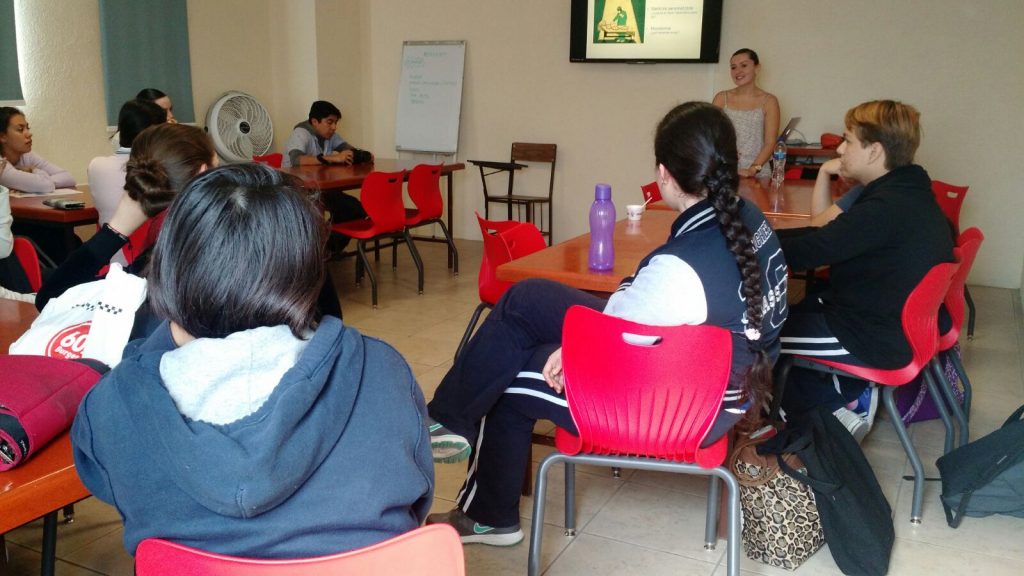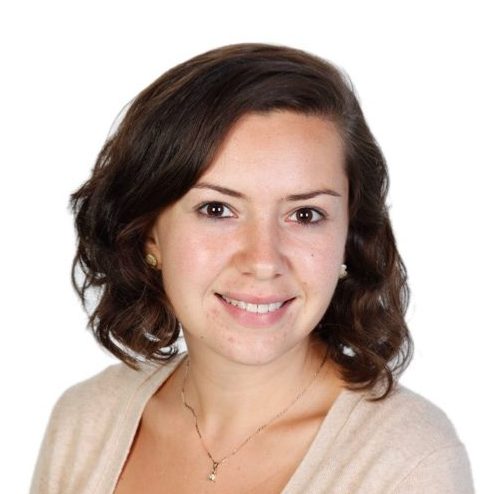EMBL School Ambassador Vilma Jimenez Sabinina
Country: Mexico
Profile
My name is Vilma Jimenez Sabinina and I grew up in Cuernavaca, Mexico or better known as the city of eternal spring. I’m currently halfway through my PhD in the Ellenberg group (Cell Biology and Biophysics) at EMBL Heidelberg. My PhD project aims to resolve the architecture of the Nuclear Pore Complex by using 3D Super-resolution microscopy. I did my undergraduate studies at the National University of Mexico in the Program of Genomic Sciences and my thesis work on cancer epigenetics at CSHL, but I discovered through different internships that my fascination in science lies closer to cell biology and imaging technologies.
Talking about my scientific research to non-scientific people has always been a bit challenging for me. This pushed me to be more active in the area of scientific communication; leading scientific discussion tables and giving talks to master and undergraduate students has been very interesting and encouraging to me. Nevertheless, the biggest challenge I have experienced in this area was actually talking about my scientific interests to high school kids with no previous experience in research. But it was this experience in particular, which I have found one of the most exciting and rewarding and wouldn’t doubt in trying it out again!
Diary
On February 2016, I traveled back home to Cuernavaca, Mexico and decided that this time I wouldn’t leave without visiting my high school.
I contacted the high school director and offered to give a small presentation about my research project and to talk to the students that might be interested in studying something related to biological sciences in the future. Because Biology was not the most popular subject when I was back in high school, I automatically assumed I would be dealing with a couple of students. To my surprise, the classroom started filling up with students of all different ages, all very friendly and curios about what I had to say to them.
I started my presentation by telling them about what initially had pushed me into science and remembering some outstanding teachers I had come across in high school, who unfortunately, I found out during my visit, were no longer with us. Afterwards, I told them about all the great opportunities that the National University of Mexico has to offer, especially the undergraduate program in Genomic Sciences and all the support that one can get from the University to travel abroad and learn from many different internships, as I believe these were key experiences for my scientific growth. I was overwhelmed by all the questions I was getting; so many students were interested in continuing with a scientific career and they had so many doubts about what would be the best career option for them and where to study. I tried my best to guide them with my personal experience and also to calm them down by explaining that science nowadays was very interdisciplinary. I pointed out that scientist from very different disciplines collaborate with each other in order to resolve a particular question of interest, and no matter in which scientific direction they choose to go, they can always pursue their particular curiosities.
Finally, I told them about what a great place EMBL is and about my PhD project. I started explaining to them why I find cell biology so fascinating and how a great invention, the light microscope, had revolutionized our understanding about the smallest unit of life. Then, we talked about what fluorescence is and even did a small experiment with tonic water (quinine), as this had been one of the first sources where fluorescence was historically observed. They all were so amazed about fluorescence, fluorescent proteins, microscopy and all the biological processes one can understand with it, that at the end of the class one girl even told me: “I love fluorescence and would like to work with it too! What should I study?”.
At the end, we all had a great time, a lot of fun stories came across the classroom, and I think one of the most important things was that all students fell free and open to really express themselves, their curiosities and their doubts about how scientific and academic life is. This experience left me with a lot of enthusiasm and reinforcement about my passion for science and its communication.


